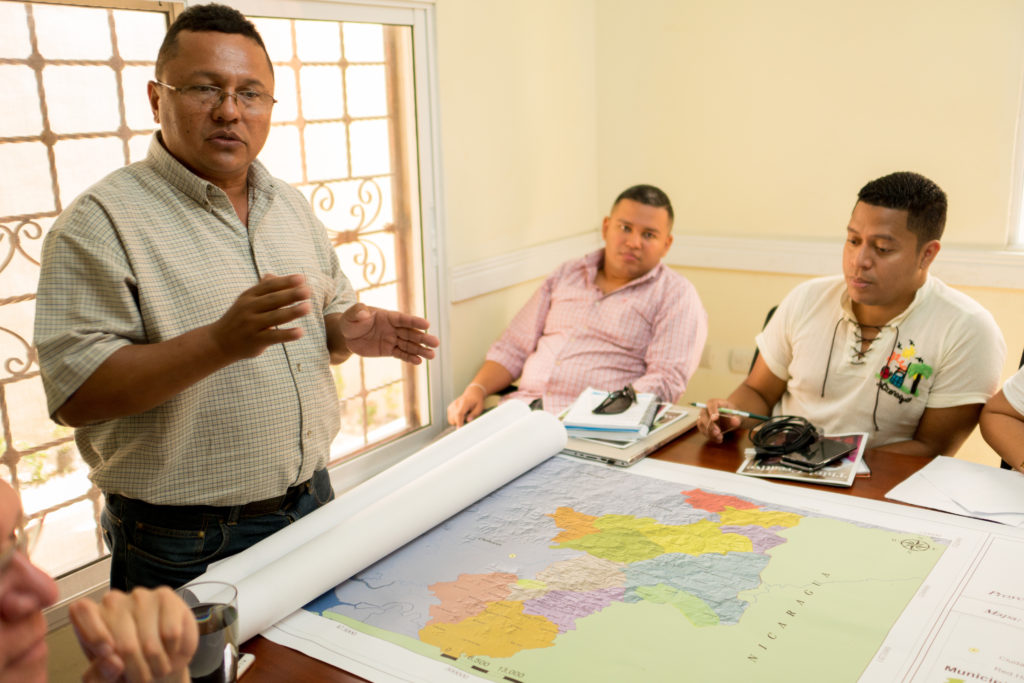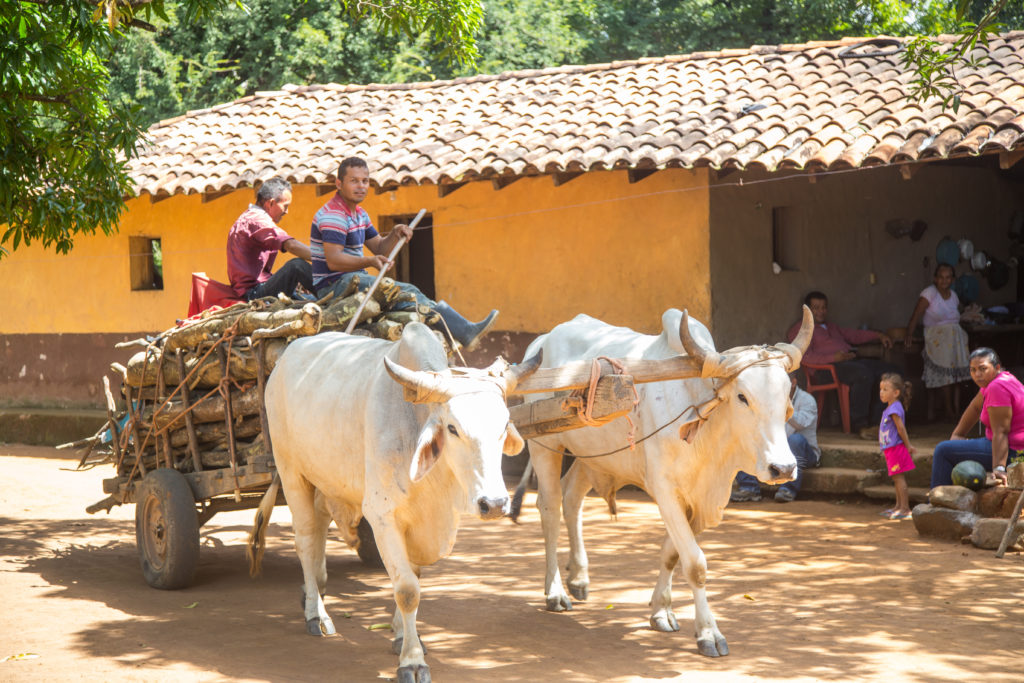In the Honduran Dry Corridor community of Oroquina, Jairo is a certified motorcycle mechanic who could not find employment after graduation from a technical training school. “The lack of employment opportunities here forces us to migrate or leave our country,” he laments.
This story is common among Honduran youth who are struggling to better their lives through education and hard work. But change is possible, particularly when a more nuanced understanding of the difficulties youth face when transitioning to the workforce – and how missteps could translate into a decision to migrate.
Fortunately, through the Creative-led Dry Corridor Alliance project, which was supported by the World Bank and the Honduran government, Jairo co-developed a financially viable business plan for his motorcycle repair shop. In addition to critical technical, business planning and administrative assistance, he received productive assets such as machinery to start and sustain his business. Today, Jairo provides an essential service to his community of Oroquina, generates employment for others and has an established income stream from a sector he is passionate about.
Jairo’s community is also central to the country’s food security, where more than 30 percent rely on agriculture for employment, making it an opportune sector for youth to get a job. However, this region is one of the most vulnerable to climate change and its impacts, combined with youth’s diverse aspirations for work beyond agriculture, which creates a need for diversified income opportunities.
Rural youth in Honduras: Insights and challenges
Honduras is one of the poorest nations in the Americas. The country suffers from low levels of education and poor learning outcomes, livelihood informality and instability, high levels of crime and violence, and profound inequality. More than half of the country is aged 25 and younger and almost 28 percent of Honduran youth are neither employed nor pursuing further education.
Youth have lost faith in education and its promise for social mobility, as evidenced by the country’s high dropout rate, which is particularly severe for 15- to 17-year-olds in rural communities. The country’s low and unequal connectivity and lack of digital skills by students, teachers, and parents leave many rural and poor children behind, resulting in massive learning loss for Honduras’ most vulnerable youth – a problem that was exacerbated by natural disasters (Hurricanes Eta and Iota) and prolonged pandemic-related school closures.
Youth who complete education and transition into the workforce face additional constraints. Agriculture jobs dominate the labor market, but they are often of low quality, poorly paid, and offer little hope for long-term wealth generation. Unsurprisingly, many rural youth aspire to work outside agriculture, creating a need for diversified income opportunities.
Underpaid work opportunities, low levels of education, limited private sector investment, significant dependency on small-scale, low-input agriculture, vulnerability to climate change, and policies that ignore rural youth contribute to outmigration- a common response to livelihood instability and insufficient resource access, particularly in under-served rural communities.
Inclusive and responsive solutions to meet the complex needs of Honduran Youth
With so many out of school youth and limited employment opportunities, it is expected that many of them will need remedial support to return to formal education, others will require alternative formal and non-formal educational opportunities to attain basic academic and life skills, and others will require specific training and support to develop the appropriate skill-sets to enter the labor market.
Evidence drawn from Creative’s implementation of the Dry Corridor Alliance provides insights into the complex needs of rural youth and how those needs could be effectively addressed in the design of future programming. Among the insights:
Target Educational interventions to high outmigration municipalities: Governments should give special consideration to educational interventions within high outmigration municipalities to address the unique challenges that will face youth who have already tried to irregularly migrate and are returned to their communities. These youth are less likely to reenter and complete schooling than to choose to irregularly migrate again, especially if they do not see education as a pathway for economic opportunity. In addition to flexible schedules and remedial support, these learners have social emotional needs that call for targeted teacher training, materials, and resources on social and emotional learning practices.
Offer flexible training or education. Rural youth need to know about and understand the diverse options available to them to complete their education journeys. Enrollment campaigns to formal education, and access to accredited non-formal educational offerings and alternative modalities are all critical. In Honduras, there is a need to further develop flexible modalities tailored to rural youth and to expand connectivity and digital skills training to under-served rural communities, which requires leveraging private sector investments through effective partnerships and appropriate policy frameworks.
Diversify livelihoods opportunities. Rural youth operate in a challenging labor market with high levels of unemployment. Entrepreneurship offers a chance for youth to learn the skills to thrive in today’s economy. It provides youth with soft skills, encourages creativity and builds youth resilience. It prepares youth to harness their individual talents to create solutions that respond to unmet community needs while generating income. Whether youth decide they want to become a farmer or start a small business, having flexible options that respond to both the local market and youth interests ensures youth- regardless of the path they chose- have dignified livelihoods.
Increase youth leadership roles and visibility. For young people living in rural communities to reach their full personal and professional potential, they must be given an opportunity to be active contributors of local development. Youth understand what they need, and when adequately supported can innovate solutions to address their own challenges. When youth are equipped with skills and resources, and are given the space to lead, youth create jobs, build collaborative networks and knowledge communities, and contribute to local community-based solutions. This is only possible if projects approach youth as unique and equal contributors.

Most affected – greatest opportunities
Young people are by far one of the most affected groups by this learning and employment crisis, but also the ones with the most hope and potential to build a better future for themselves and their communities. It is our responsibility to safeguard youth and put them in the driver seat so they can lead and solve the toughest problems their communities are facing. When development programs are responsive to the diverse needs of youth, youth can fulfill their aspirations, satisfy their basic needs, and choose to stay in their own communities and contribute to local and national development.
Daniela Farinas is a Project manager for the Economic Growth Division. As part of the programs team, she works on the Youth, Livelihoods, and Agriculture practice area.
Claudia Salazar Suarez is Senior Technical Manager, Latin America and Caribbean Specialist in the Education for Development Division. As part of the technical team, she works at the intersection of technical, business development and strategic work focused on expanding Creative’s reach in the LAC region.
Mariellen Jewers is the Technical Advisor at Creative’s Center for Migration and Economic Stabilization.


